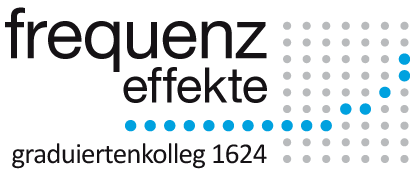Major aims
The central hypothesis informing the Research Training Group (RTG) 1624 is that the frequency with which the same or similar speech events are produced and perceived influences the cognitive representation of language. It is obvious that frequency is neither the only factor having this effect nor that all domains of linguistic knowledge are equally sensitive to frequency effects. This notwithstanding, starting out from the assumption that mental representations of linguistic structures are at least partially the result of our experiences with language, we are justified to hypothesize that the frequency with which we encounter certain elements and structures in our everyday use of language will have effects on our linguistic knowledge. Thus it is the ultimate aim of the RTG 1624 to undertake an in-depth empirical investigation and theoretical modelling of the workings of the factor FREQUENCY in phonology and morphosyntax from the point of language variation, language change, language acquisition and, in general, language processing. In doing so, we will primarily formulate and test hypotheses taken from, or inspired by, usage-based models such as exemplar theory and construction grammar. For the projects on language processing, connectionist models will be drawn upon as they allow us to model the interaction of frequency with other relevant factors playing a role in language performance. Among such factors, salience, recency and density figure prominently.


